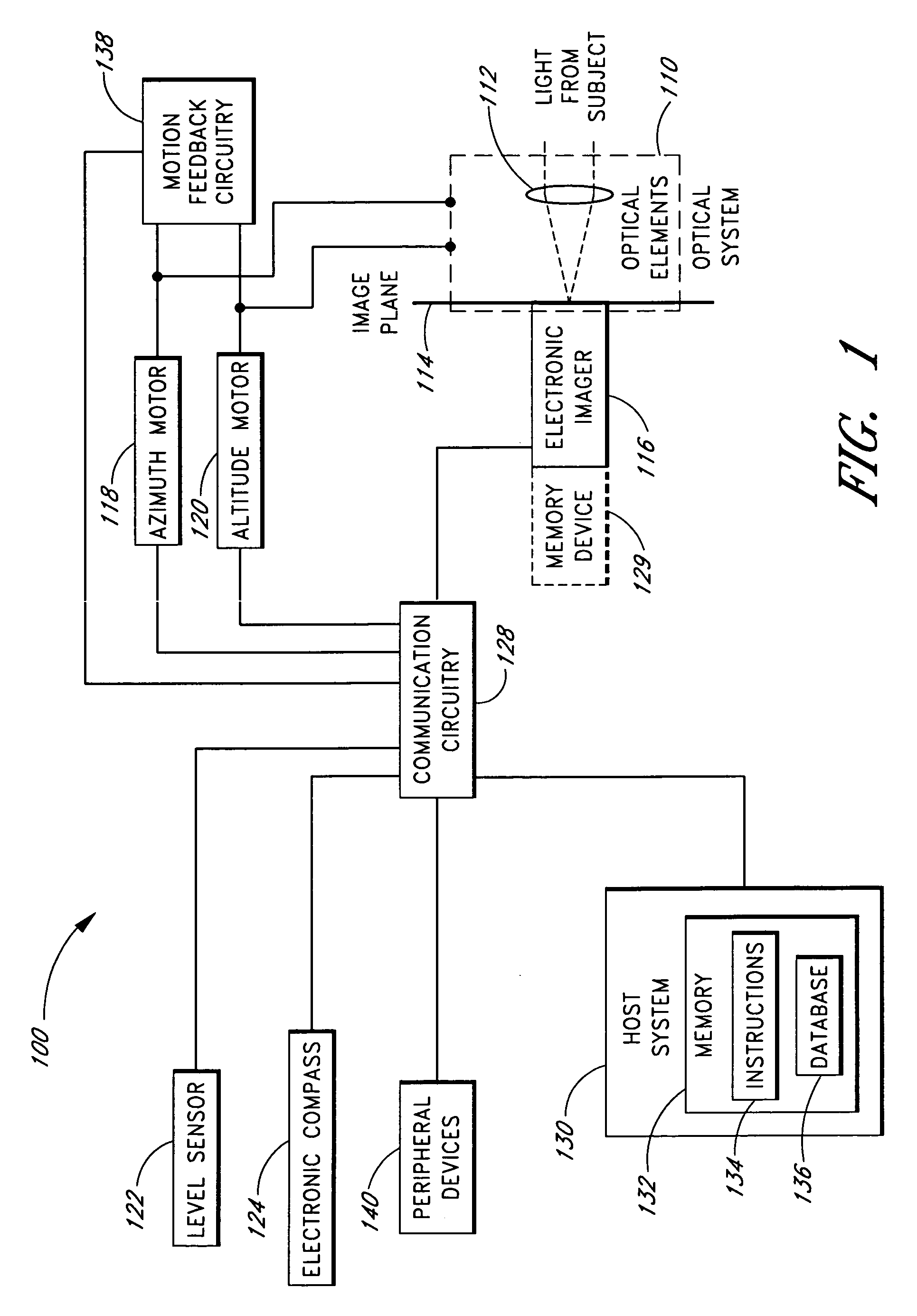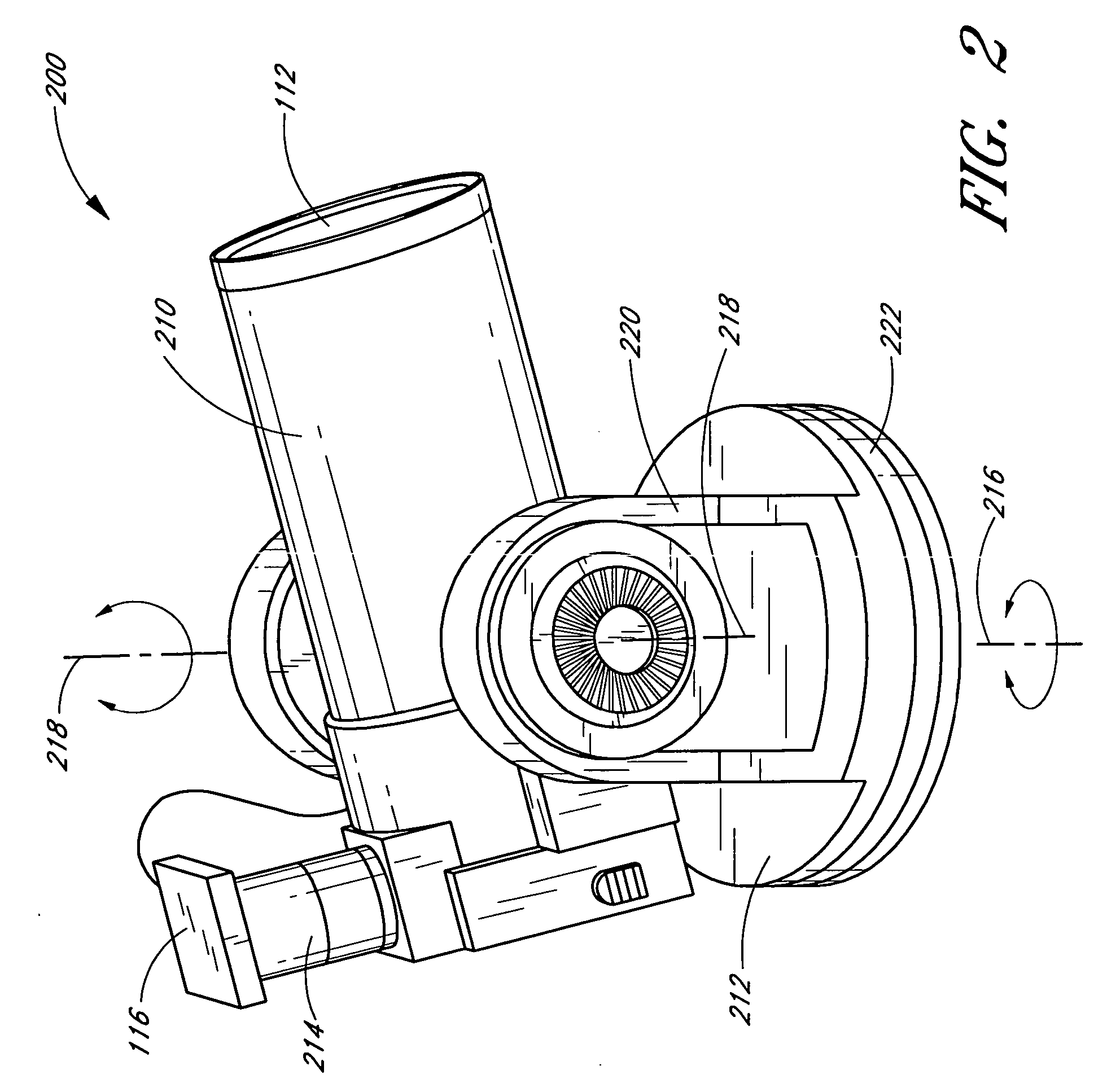Self-aligning telescope
a telescope and self-aligning technology, applied in the field of telescope control systems, can solve the problems of affecting the complexity of the orientation and alignment of the telescope for less experienced users, and the potential inaccurateness of the shape-oriented alignment system, so as to increase the accuracy of the telescope's self-alignment and quick and accurate orientation
- Summary
- Abstract
- Description
- Claims
- Application Information
AI Technical Summary
Benefits of technology
Problems solved by technology
Method used
Image
Examples
Embodiment Construction
[0023] Embodiments of the present disclosure involve a telescope control system that orients a telescope with respect to the celestial sphere. To orient the telescope, certain embodiments of the telescope control system point the telescope in the direction of an alignment star or alignment area of the sky. The telescope control system images a field of view in the alignment area, and processes the images to determine the celestial coordinates of a point such as a center of the field of view the alignment area. The telescope control system then maps the telescope's coordinate system to the celestial coordinate system. Once mapped, the telescope control system can advantageously slew the telescope to any desired celestial object in the viewable sky based on, for example, user selection, system recommendations, combinations of the same, or the like.
[0024] In certain embodiments, the telescope control system seeks to improve the accuracy of the foregoing self alignment procedure. For e...
PUM
 Login to View More
Login to View More Abstract
Description
Claims
Application Information
 Login to View More
Login to View More - R&D
- Intellectual Property
- Life Sciences
- Materials
- Tech Scout
- Unparalleled Data Quality
- Higher Quality Content
- 60% Fewer Hallucinations
Browse by: Latest US Patents, China's latest patents, Technical Efficacy Thesaurus, Application Domain, Technology Topic, Popular Technical Reports.
© 2025 PatSnap. All rights reserved.Legal|Privacy policy|Modern Slavery Act Transparency Statement|Sitemap|About US| Contact US: help@patsnap.com



